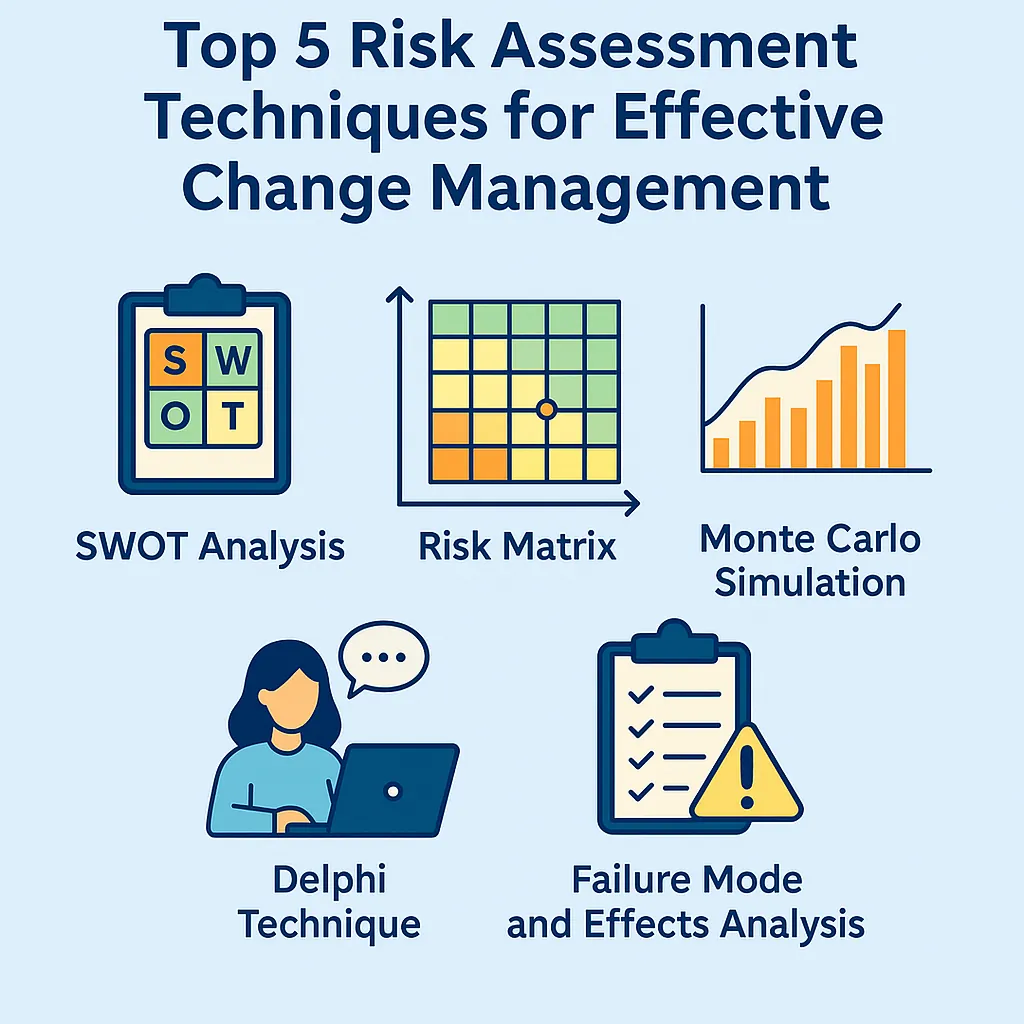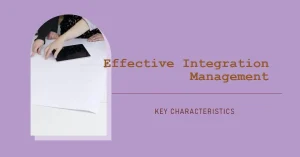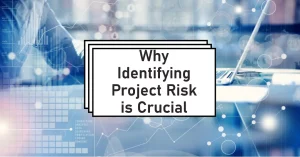Introduction
Risk assessment serves as a critical component, particularly when navigating the complexities of change management. Risk assessment involves identifying, analyzing, and prioritizing potential risks that could impact a project. This process is essential for change management as it helps project managers anticipate challenges and devise strategies to mitigate them, ensuring smoother transitions and successful project outcomes.
The relevance of risk assessment in change management cannot be overstated. It provides a structured approach to understanding the uncertainties associated with changes, allowing project teams to make informed decisions. By systematically evaluating risks, organizations can enhance their readiness for change, align resources effectively, and minimize disruptions. This proactive stance is vital in today’s dynamic business environment, where the ability to adapt quickly can determine a project’s success or failure.
Conversely, ineffective risk management can have dire consequences on project outcomes. When risks are not adequately identified or addressed, projects may face unexpected hurdles that can lead to delays, budget overruns, and even project failure. Poor risk management can also erode stakeholder confidence and diminish team morale, further complicating the change process. Therefore, understanding and implementing effective risk assessment techniques is crucial for project management professionals aiming to navigate change successfully.
In this blog, we will explore the top 5 risk assessment techniques that can significantly enhance the effectiveness of change management initiatives. These methodologies not only help in identifying potential risks but also provide frameworks for analyzing and mitigating them, ultimately leading to more successful project outcomes. By leveraging these techniques, project managers can foster a culture of proactive risk management, ensuring that their teams are well-prepared to handle the challenges that come with change.
1. SWOT Analysis
SWOT analysis is a strategic planning tool that enables project management professionals to systematically evaluate the internal and external factors that can impact change initiatives. The acronym stands for Strengths, Weaknesses, Opportunities, and Threats, and it serves as a framework for identifying and assessing these critical elements in the context of project management.
Defining SWOT Analysis
- Strengths: These are the internal attributes and resources that support a successful change initiative. Identifying strengths helps teams leverage their advantages during the change process.
- Weaknesses: These refer to internal limitations or challenges that could hinder the change initiative. Recognizing weaknesses allows project managers to develop strategies to mitigate these risks.
- Opportunities: External factors that the organization can exploit to its advantage during the change process. Identifying opportunities can help in aligning the change initiative with market trends or organizational goals.
- Threats: External challenges that could pose risks to the change initiative. Understanding threats is crucial for developing contingency plans to address potential obstacles.
Conducting a SWOT Analysis in Change Management
To effectively conduct a SWOT analysis in the context of change management, follow these steps:
- Gather a Diverse Team: Involve stakeholders from various departments to ensure a comprehensive view of the project. This diversity can provide insights into different aspects of the change initiative.
- Brainstorming Session: Organize a session to identify strengths, weaknesses, opportunities, and threats. Encourage open discussion to capture a wide range of perspectives.
- Categorize Findings: Organize the identified factors into the four categories of the SWOT framework. This helps in visualizing the overall landscape of the change initiative.
- Prioritize Factors: Assess the significance of each factor. Prioritization helps in focusing on the most critical elements that could impact the success of the change initiative.
- Develop Action Plans: Based on the analysis, create action plans to leverage strengths, address weaknesses, capitalize on opportunities, and mitigate threats.
Benefits of Using SWOT for Risk Identification and Prioritization
Utilizing SWOT analysis in risk assessment for change management offers several advantages:
- Holistic View: It provides a comprehensive overview of both internal and external factors, allowing project managers to understand the full context of the change initiative [3].
- Enhanced Decision-Making: By identifying and prioritizing risks, project managers can make informed decisions that align with organizational goals and resources [1][4].
- Proactive Risk Management: SWOT analysis encourages proactive identification of potential risks, enabling teams to develop strategies to address them before they escalate [5].
- Improved Communication: The collaborative nature of SWOT analysis fosters communication among team members, ensuring that all voices are heard and considered in the risk assessment process [6].
2. Risk Matrix
A risk matrix is a powerful visual tool used in project management to assess and prioritize risks associated with change initiatives. It provides a structured approach to identifying potential risks, evaluating their likelihood and impact, and facilitating informed decision-making.
Definition and Functionality
A risk matrix, also known as a Probability and Severity risk matrix, categorizes risks based on two key dimensions: the likelihood of occurrence and the potential impact on project objectives. This tool helps project managers visualize risks in a grid format, allowing for quick identification of which risks require immediate attention and which can be monitored over time. By plotting risks on the matrix, teams can prioritize their responses effectively, ensuring that resources are allocated to the most critical areas [4][9].
Steps to Create a Risk Matrix for Change Projects
- Identify Risks: Gather input from all project stakeholders, including team members, managers, and subject matter experts, to compile a comprehensive list of potential risks associated with the change initiative. This collaborative approach ensures that various perspectives are considered [13].
- Assess Likelihood and Impact: For each identified risk, evaluate its likelihood of occurrence (e.g., low, medium, high) and the potential impact on the project (e.g., minor, moderate, severe). This assessment can be based on historical data, expert judgment, or industry benchmarks [6][15].
- Plot Risks on the Matrix: Create a grid with likelihood on one axis and impact on the other. Place each risk in the appropriate cell based on its assessed likelihood and impact. This visual representation helps in quickly identifying high-priority risks that fall into the high likelihood and high impact quadrant [5][9].
- Develop Response Strategies: Based on the positioning of risks within the matrix, develop appropriate response strategies. High-priority risks may require immediate action, while lower-priority risks can be monitored or addressed later [2][3].
- Review and Update: The risk matrix should be a living document, reviewed and updated regularly as the project progresses and new risks emerge. This iterative process ensures that the risk management approach remains relevant and effective [1][15].
Interpreting Matrix Results for Decision Making
Interpreting the results of a risk matrix involves analyzing the distribution of risks across the grid. Risks located in the high likelihood and high impact quadrant are critical and should be addressed promptly. Conversely, risks in the low likelihood and low impact quadrant may not require immediate action but should still be monitored.
- Prioritization: The matrix allows project managers to prioritize risks effectively, focusing on those that pose the greatest threat to project success. This prioritization aids in resource allocation and strategic planning [2][8].
- Communication: The visual nature of the risk matrix facilitates communication among stakeholders, providing a clear overview of the risk landscape. This transparency helps in gaining buy-in for risk management strategies and fosters a proactive risk culture within the organization [7][11].
- Informed Decision-Making: By utilizing the risk matrix, project managers can make informed decisions regarding risk mitigation strategies, ensuring that the project remains on track and aligned with its objectives [9][15].
3. Monte Carlo Simulation
Monte Carlo simulation is a powerful quantitative risk assessment technique widely utilized in project management, particularly for managing change initiatives. This method involves running numerous simulations to predict the likelihood of various outcomes when faced with uncertainty in project variables. By randomizing input variables within defined probabilities, Monte Carlo simulation provides a robust framework for understanding potential risks and their impacts on project objectives.
Concept and Application in Project Management
At its core, Monte Carlo simulation is a mathematical technique that allows project managers to model complex scenarios and assess the risks associated with change projects. It generates a range of possible outcomes based on varying input parameters, enabling professionals to visualize the potential effects of uncertainties on project timelines, costs, and overall success. This approach is particularly beneficial in change management, where the introduction of new processes, technologies, or organizational structures can lead to unpredictable challenges and outcomes [2][11].
Modeling Uncertainty in Change Initiatives
In the context of change initiatives, Monte Carlo simulation can effectively model uncertainty by incorporating various risk factors that may influence project performance. For instance, project managers can input different scenarios regarding resource availability, stakeholder engagement, and market conditions. By simulating these variables, they can assess how changes might affect project deliverables and timelines. This capability allows for a more nuanced understanding of potential risks, enabling teams to prepare for various scenarios and make informed decisions [3][11].
Advantages of Monte Carlo Simulation for Comprehensive Risk Analysis
The use of Monte Carlo simulation in risk assessment offers several key advantages:
- Comprehensive Risk Assessment: This technique provides a thorough evaluation of risks by considering a wide range of variables and their interactions. It allows project managers to identify not only the most likely outcomes but also the extremes, which can be critical in change management [3][4].
- Enhanced Decision-Making: By visualizing the probability of different outcomes, project managers can make more informed decisions regarding risk mitigation strategies. This insight helps prioritize actions based on the potential impact of identified risks [5][11].
- Improved Communication: Monte Carlo simulation results can be effectively communicated to stakeholders, providing a clear picture of potential risks and their implications. This transparency fosters better collaboration and understanding among team members and stakeholders involved in the change process [3][11].
4. Delphi Technique
The Delphi technique is a structured method for gathering expert opinions and achieving consensus on complex issues, particularly useful in the context of risk assessment for change management in project management. This technique involves a series of iterative rounds where experts provide their insights, which are then compiled and shared with the group for further refinement. The process typically includes the following steps:
- Selection of Experts: A panel of experts is chosen based on their knowledge and experience relevant to the change project.
- Initial Questionnaire: Experts respond to a series of questions regarding potential risks associated with the change initiative.
- Feedback and Iteration: The responses are aggregated, and a summary is provided back to the experts. They are then invited to revise their earlier answers based on the group’s feedback.
- Final Consensus: This process is repeated until a consensus is reached or the responses stabilize, indicating a clear understanding of the risks involved.
The Delphi technique is particularly effective in enhancing risk assessment for change management due to its ability to leverage the collective expertise of specialists. By systematically gathering and refining expert opinions, organizations can identify potential risks that may not be immediately apparent. This collaborative approach helps in:
- Identifying Hidden Risks: Experts may highlight risks based on their unique perspectives and experiences, leading to a more comprehensive risk profile for the change project [1].
- Prioritizing Risks: Through iterative feedback, the technique allows for the ranking of risks, helping project managers focus on the most critical issues that could impact the success of the change initiative [7].
- Building Consensus: Achieving a collective agreement among experts fosters a sense of ownership and commitment to the identified risks, which can enhance the overall risk management strategy [6].
Application Examples
The Delphi technique can be applied in various change management scenarios, such as:
- Organizational Restructuring: When a company undergoes a significant restructuring, the Delphi technique can be used to gather insights from leaders across different departments to identify potential risks related to employee morale, productivity, and operational disruptions.
- Technology Implementation: In projects involving new technology adoption, experts from IT, operations, and user experience can collaborate through the Delphi method to assess risks associated with system integration, user training, and data security.
- Regulatory Changes: For organizations facing new regulatory requirements, the Delphi technique can help gather insights from compliance experts to identify risks related to non-compliance and the potential impact on business operations.
By employing the Delphi technique, project managers can enhance their risk assessment processes, ensuring that they are well-prepared to navigate the complexities of change management effectively [4][9].
5. Failure Mode and Effects Analysis (FMEA)
Failure Mode and Effects Analysis (FMEA) is a systematic and proactive methodology used in project management to identify, assess, and mitigate potential risks and failures in products, processes, or services. This structured approach allows project managers to anticipate failures during the design stage, ensuring that risks are addressed before they can impact the project negatively.
What is FMEA and How It Works
FMEA is designed to identify and prioritize possible failures in a design, manufacturing, or assembly process. By analyzing potential failure modes—ways in which a process could fail—FMEA helps teams understand the risks associated with each component of a project. The methodology involves assessing the severity of each failure, its likelihood of occurrence, and the ability to detect it before it causes harm. This comprehensive analysis enables organizations to focus their resources on the most critical risks, thereby enhancing the overall reliability of the project outcomes [1][2][8].
Steps Involved in Conducting FMEA
Conducting FMEA involves several key steps:
- Identify the Functionality of Parts: Begin by understanding the purpose and functionality of each component within the project. This foundational knowledge is crucial for identifying potential failure modes [3].
- Brainstorm Potential Failure Modes: Collaborate with team members to brainstorm all the different ways each component could fail. This step is essential for uncovering risks that may not be immediately apparent [5].
- Assign Causes for Each Failure: For each identified failure mode, determine the underlying causes. This analysis helps in understanding why a failure might occur and what factors contribute to it [3].
- Assess Severity, Occurrence, and Detection Ratings: Each failure mode is evaluated based on its severity (impact of the failure), occurrence (likelihood of the failure happening), and detection (ability to identify the failure before it affects the project). These ratings help prioritize which risks need immediate attention [6][8].
- Develop Action Plans: Based on the analysis, create action plans to mitigate the identified risks. This may involve redesigning components, implementing additional controls, or enhancing detection methods [4][7].
Benefits of Proactive Risk Management through FMEA
Implementing FMEA in change management offers several significant benefits:
- Enhanced Risk Awareness: FMEA fosters a culture of risk awareness among project teams, encouraging proactive identification and management of potential issues before they escalate [8].
- Improved Decision-Making: By providing a structured framework for analyzing risks, FMEA aids project managers in making informed decisions regarding resource allocation and risk mitigation strategies [4].
- Increased Project Reliability: By addressing potential failures early in the project lifecycle, FMEA contributes to the overall reliability and success of change initiatives, reducing the likelihood of costly disruptions [2][8].
- Collaboration and Team Engagement: The FMEA process encourages collaboration among team members, leveraging diverse perspectives to identify risks and develop comprehensive solutions [4].
Conclusion
Effective change management is crucial for ensuring that initiatives are successful and sustainable. Throughout this discussion, we have explored five key risk assessment techniques that can significantly enhance the management of change projects:
- Change Impact Assessment (CIA): This technique focuses on analyzing the potential impacts of changes on various stakeholders within the organization, allowing for a clearer understanding of how changes will affect operations and personnel.
- Stakeholder Analysis and Engagement: By identifying and engaging stakeholders early in the process, project managers can better anticipate resistance and gather valuable insights that inform risk management strategies.
- SWOT Analysis: This tool helps in identifying strengths, weaknesses, opportunities, and threats related to the change initiative, providing a comprehensive view of the internal and external factors that could influence success.
- PEST Analysis: This technique evaluates the political, economic, social, and technological factors that may impact the change process, helping project managers to foresee potential risks arising from the broader environment.
- FMEA (Failure Mode and Effects Analysis): FMEA is a systematic approach for identifying potential failure points in a process and assessing their impact, allowing teams to prioritize risks and develop mitigation strategies effectively.
Encouraging project management professionals to adopt these methodologies is essential for fostering a proactive approach to risk management. By integrating these techniques into their change management processes, professionals can better navigate the complexities of change and enhance the likelihood of project success.
Moreover, it is important to recognize that risk assessment is not a one-time activity but a continuous process. As changes unfold and new information emerges, ongoing evaluation is necessary to adapt strategies and address any new risks that may arise. By committing to a dynamic risk assessment approach, project managers can ensure that their change initiatives remain resilient and responsive to evolving challenges.
Find out more about Shaun Stoltz https://www.shaunstoltz.com/about/.
This post was written by an AI and reviewed/edited by a human.



